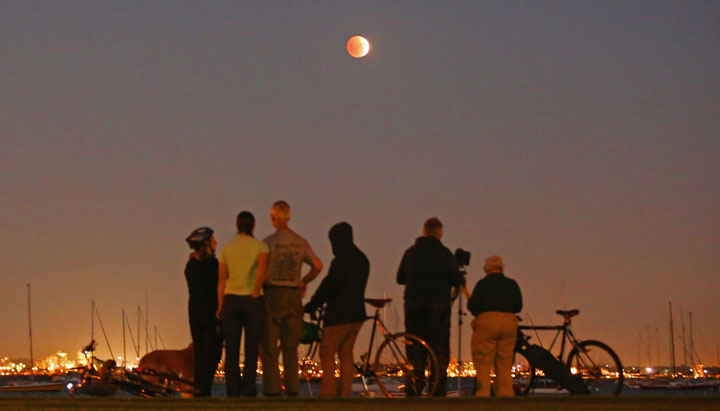Podcast: Play in new window | Download
Subscribe: Apple Podcasts | Google Podcasts | Spotify | Email | RSS | More
A special edition of our Sky Tour astronomy podcast provides you with a guided tour of the key events that will occur during this coming weekend's total lunar eclipse.
Lunar eclipses are slow-motion cosmic events with lots of colorful moments. But how can you know what to look for and when?

Scott Barbour / Getty Images
Don't worry! This special edition of our monthly Sky-Tour podcast provides you with a "play-by-play" description of this weekend's total lunar eclipse. It offers guidance on what to see, and when, from the first moment of penumbral shading to the last. All you’ll need to do is download or stream the audio, go outside with your playback device, and enjoy the show.
This 13-minute-long podcast is narrated by Sky & Telescope's Kelly Beatty, who huddled with colleagues Alan MacRobert of Sky & Telescope and New York meteorologist Joe Rao, to provide you with a complete, play-by-play guide for the event. The narration divides the eclipse into several distinct stages, so you can watch and listen for a while, then come back out later and resume listening for the next key event. Time points are given in Eastern and Pacific Standard Times (you can work out the other times zones yourself if needed).
Lunar eclipses occur when Earth passes directly between the Sun and Moon, and the lunar disk slides into Earth’s shadow. This always happens at full Moon, and when that happens the Moon goes from big and bright, to completely dark, and back to full brightness. And, as this podcast explains, no two total lunar eclipses are alike — and they rarely look like "blood Moons." Some are especially dark, while others can be bright copper-colored or even bright orange.
Skywatchers across the United States haven’t all gotten to see a total lunar eclipse in more than 3½ years. The last one was back in September 2015. And the next one visible anywhere won’t come until May of 2021. So be sure to see this one if you can.
Joe Rao notes that this will be an exceptional eclipse in more ways than one. First, it takes place on the Sunday night of a 3-day holiday weekend in the U.S., ensuring that kids of all ages will be able to stay up and watch this sky show no matter how late. Second, because it’s midwinter for northerners, the geometry of the lunar orbit will make the Moon pass eerily high up in the sky. Third, the timing couldn’t be better — totality commences before midnight across all of the contiguous United States.
So if you're ready to enjoy this eclipse in a whole new way, download or stream the podcast below.
 0
0
Comments
You must be logged in to post a comment.